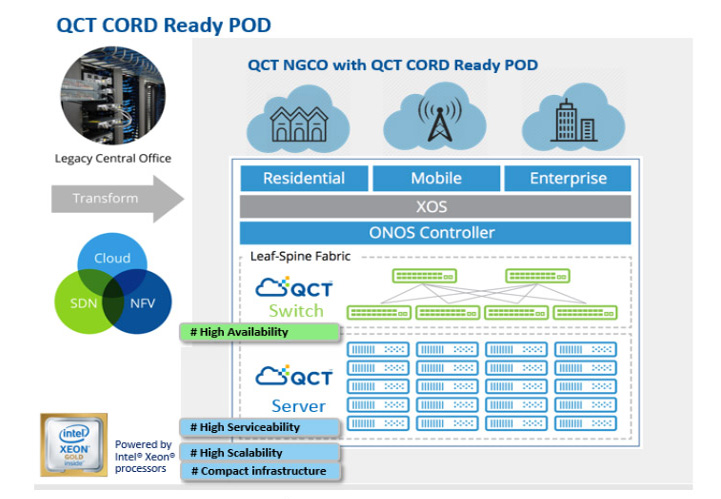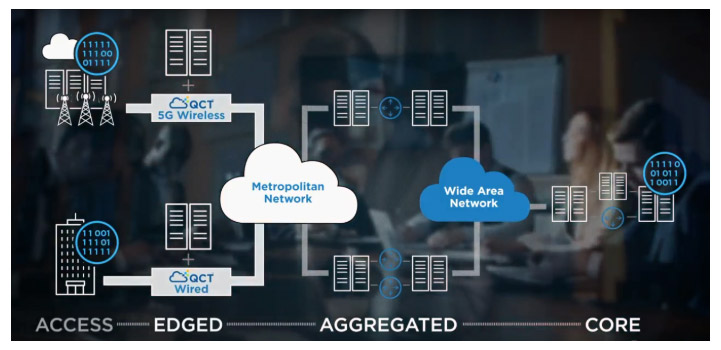At MWC Shanghai 2018, China Mobile, China Unicom, and China Telecom brought its partners on stage to speak on the Open Telecom IT Infrastructure (OTII). What the project entails are deep customizations, open standards, unified, and standardized server technology solutions and prototype products for telecom applications. QCT feels very honored to be invited to the OTII project as it aligns with our “Open” vision and strategy perfectly.
QCT has been engaging in open-source communities, contributions and collaborations since day one. We actively participate with several open-source organizations including OTII, the Open Compute Project (OCP), OpenStack Foundation, Open Networking Foundation (ONF) CORD, and Open Networking Lab to name a few. And by leveraging open community standards, QCT can minimize duplicating vendor efforts, and focus the majority of R&D investments on the development of innovative product technologies, enabling network virtualization for telco customers.

Fig.1 QCT CORD Ready POD Architecture
Looking towards 5G, next generation central office (NGCO), which includes network function virtualization (NFV) and software defined networking (SDN), will be a key to supporting the ultra speeds and low latencies required for mission critical reliability. For that to occur, a lot of radio access network (RAN) and evolved packet core (EPC) components will be running on commodity hardware networks. Commodity hardware is less expensive than purpose built telecom infrastructures, and yet they are cost effective so that operators can price their own services more competitively and profitably.
One of the major challenges for operators is architecting more efficient networks for the changing wireless subscriber traffic patterns. With fiber being implemented in today’s networks, NGCO can support more mobile traffic and serve more subscribers per central office compared to the previous copper-based architecture. With this much aggregation at a single point, technology enablers are now leading the industry away from proprietary interfaces to serve broader areas with best-in-class network elements. This gives networks more flexibility, allowing operators to support moving functions to the edge of their network and allowing them to take advantage of improved latency and an overall migration path that brings data center economics and cloud agility to existing CO facilities.

Fig.2 QCT NGCO Architecture
Now, ecosystems of vendors are developing open interfaces with various capabilities, avoiding vendor lock-in, while adhering to standards and verifying they are meeting operator requirements as they gradually migrate to NGCOs. With such interoperability, operators stand to benefit by being able to transform their networks into more efficient and flexible platforms capable of new services and revenue opportunities. At present there are a handful of industry projects that are focused on offering such solutions, and QCT is proud to be involved with them as an enabler for so many that will produce standards with requirements for implementations and interoperability.
For more information visit: http://go.qct.io/qct-central-office-v2/

